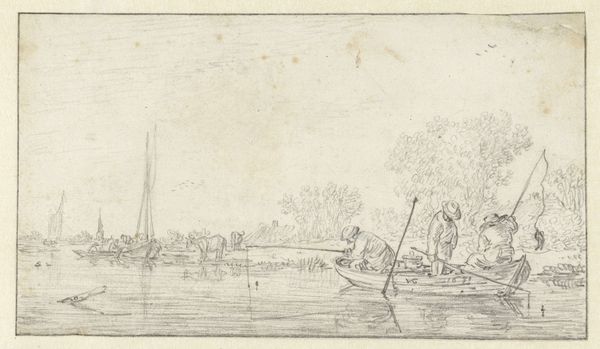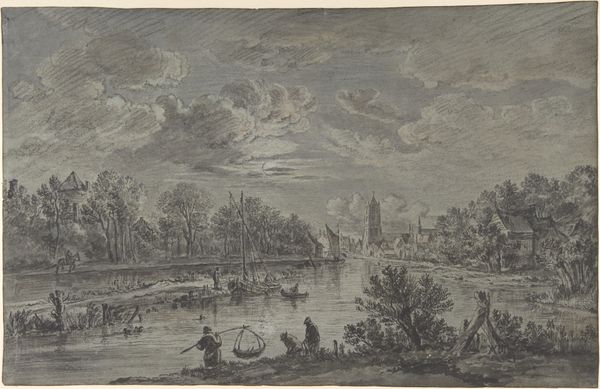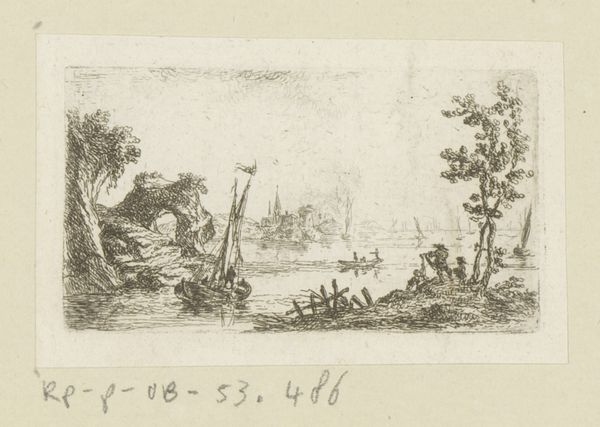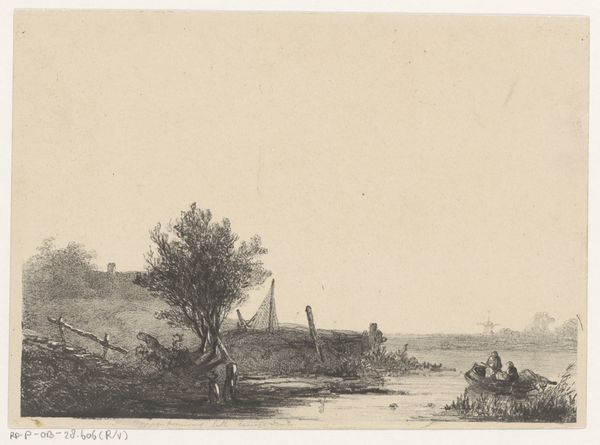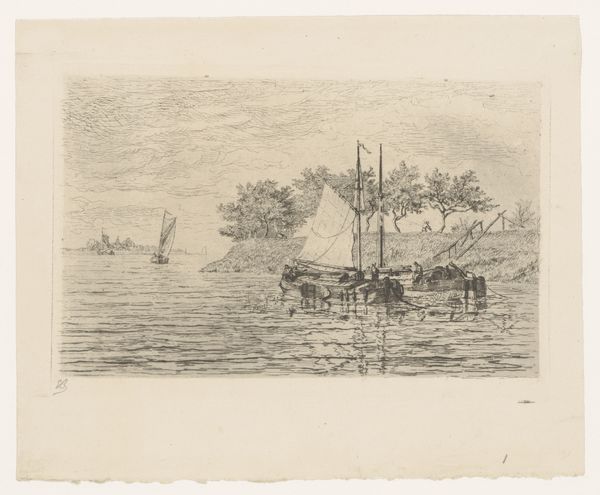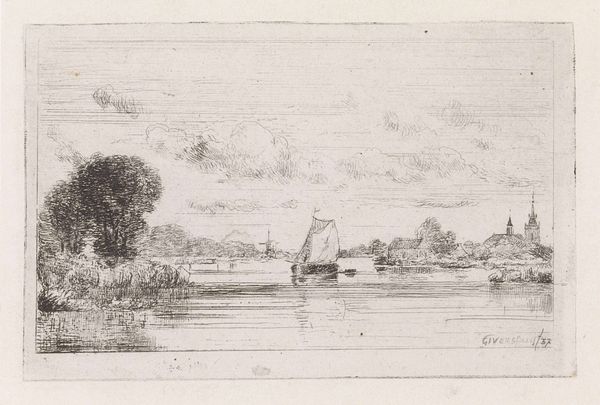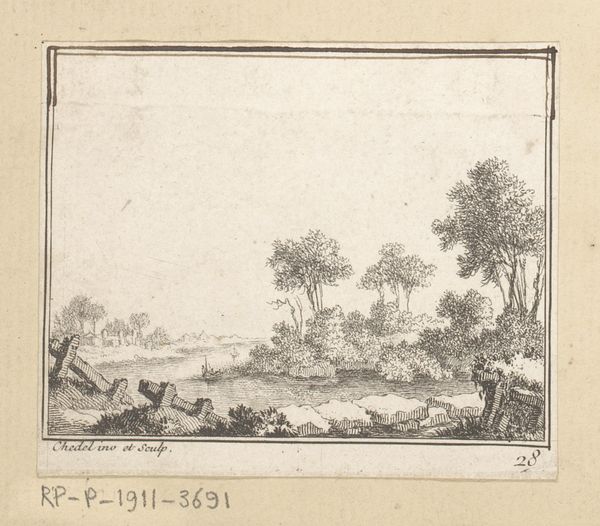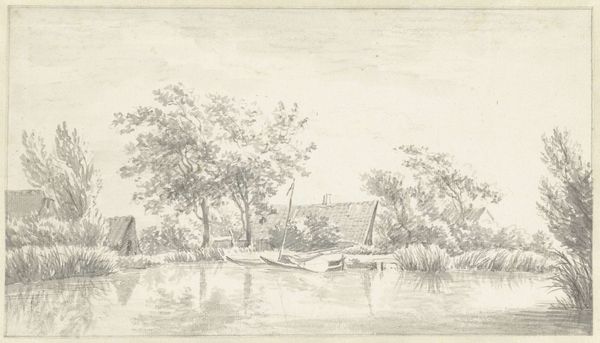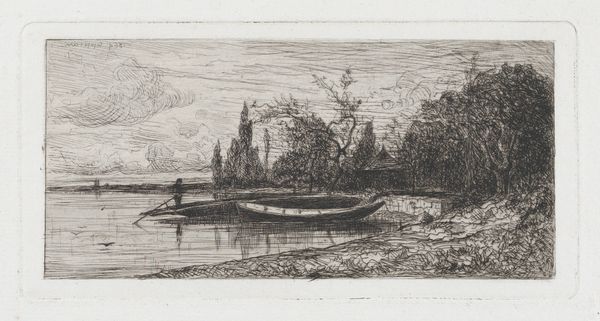
Landschap met boerderijen, gezien vanaf het water 1742
0:00
0:00
christianwilhelmernstdietrich
Rijksmuseum
print, etching
#
baroque
# print
#
etching
#
landscape
#
15_18th-century
#
genre-painting
Dimensions: height 83 mm, width 137 mm
Copyright: Rijks Museum: Open Domain
Editor: We're looking at "Landschap met boerderijen, gezien vanaf het water," or "Landscape with farms, seen from the water," an etching by Christian Wilhelm Ernst Dietrich, created in 1742. There's a serene stillness about it. What can you tell me about this landscape? Curator: Dietrich's choice of subject aligns with the 18th-century's burgeoning interest in the picturesque. How does the landscape contribute to a sense of national identity or belonging during this period? Was Dietrich trying to evoke nostalgia, or create a sense of familiarity among audiences who were increasingly urbanizing? Editor: That’s fascinating. I see it as just a peaceful scene, but thinking about the social changes makes me consider it in a completely new light. It almost feels like an idealized version of the countryside, especially for people moving into cities. Curator: Exactly. Think about the rise of landscape prints and paintings; they weren't just about aesthetics. They were about power, ownership, and even constructing a national narrative. The art market increasingly catered to a burgeoning middle class wanting access to cultural capital. What role did institutions like the Rijksmuseum play in legitimizing certain narratives about national identity and artistic heritage? Editor: So, a simple countryside scene becomes part of this much larger cultural and political conversation. How incredible! I suppose it goes to show how even seemingly innocuous artwork carries cultural weight. I definitely see this print differently now.
Comments
No comments
Be the first to comment and join the conversation on the ultimate creative platform.

